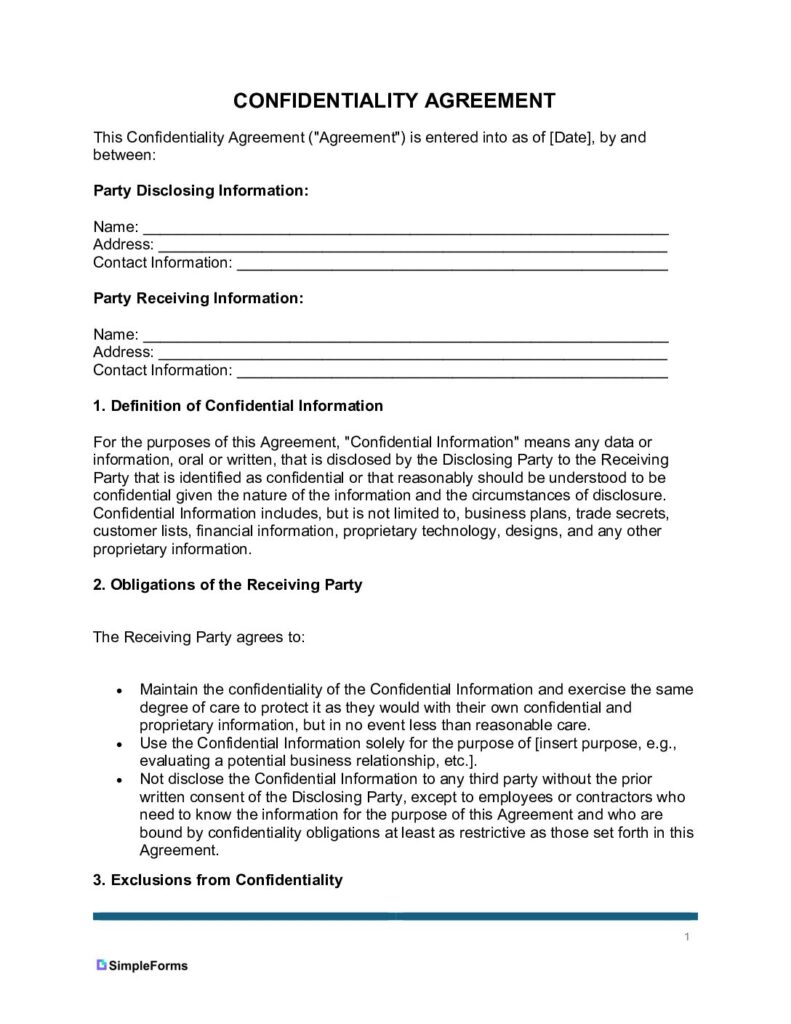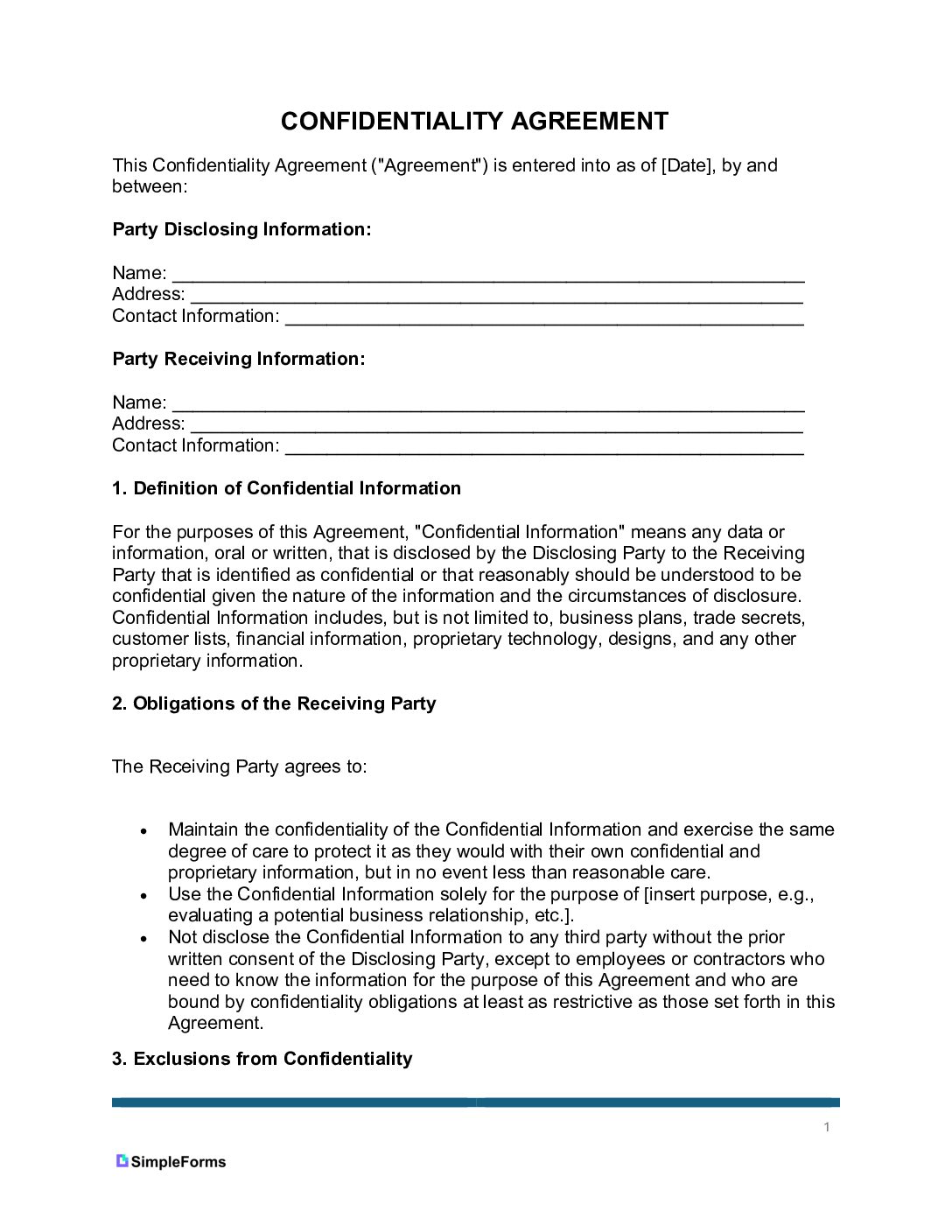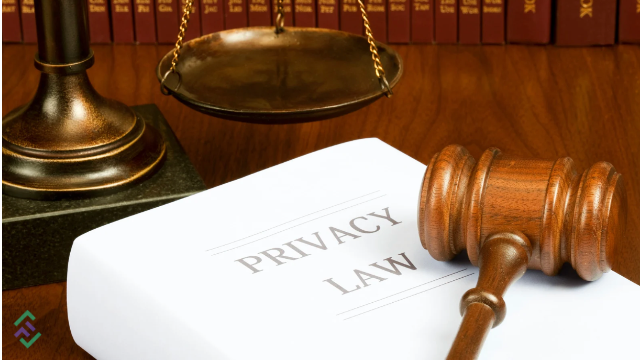Using a confidentiality agreement template saves time and confirms legal protection by including standard terms such as the definition of confidential information, obligations of the receiving party, and the duration of confidentiality. Whether you’re hiring an employee, working with a contractor, or starting a partnership, an NDA template can be tailored to fit your specific needs.
Law Alert ⚖️
Frequently Asked Questions
What is a Confidentiality Agreement?
Also known as an NDA (short for Non-Disclosure Agreement), is a legally binding contract establishing a confidential relationship between two or more parties. Both parties agree not to share sensitive information from one another with others. These documents keep trade secrets, proprietary information, or non-public business information private.
How to Write?
When writing the document, include these key elements:
- The Parties
- The Definition of the Confidential Information
- Receiving Party Obligations
- Exclusions
- Timeframe
- Consequences of Breach of Agreement
Is it ever okay to breach a confidentiality agreement?
Violation of the form should be avoided at all costs because it is legally binding. Breaching the contract can lead to legal repercussions, such as hefty fines or lawsuits.
Is it enforceable?
Yes, they are enforceable under the law.
When are NDA’s Used?
NDAs are used in business transactions, during negotiations, collaborations, or when onboarding new employees with access to confidential information. Attach the LLC Operating Agreement Form.
Sources
Sample NDA Agreement Template
Confidentiality Agreement (NDA) Checklist
✅ Before Signing Checklist
Disclosing Party Responsibilities:
Receiving Party Responsibilities:
✅ After Signing Checklist
Both Parties:


